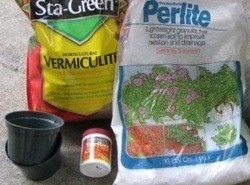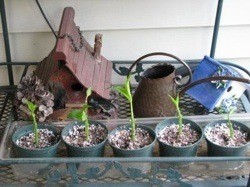If you love hydrangeas, as I do, now is the time to propagate them. If you don't have one, maybe a neighbor would let you take a few cuttings. It won't harm the existing plant, so don't be shy in asking. In about 6 weeks you'll be able to plant the cuttings in their permanent site.

I took my cuttings from a Macrophylla Hydrangea. They are very adaptable, I have one planted on the north side of my house (shady) and one on the south side (sunny) and some in dappled sun, under trees. They all bloom beautifully! I have propagated all my hydrangeas this way, but I recently read you can place the cuttings in water to root them. You might want to try that.
Approximate Time: 1/2 hour




Here are the questions asked by community members. Read on to see the answers provided by the ThriftyFun community.
I have tried to propagate hydrangeas and have not had any luck. When is the best time to take the cuttings? Any help will be very much appreciated with detailed propagation tips.
Hardiness Zone: 6a
By Theresa from St Charles, MO

Follow these steps to grow hydrangeas from cuttings.
ModerateInstructionsThings You'll Need:
Lime
Small planter
Aluminum sulfate
Hydrangea cuttings
Mulch
Sandy soil
Fertilizer
Small shovel
Step 1Start new cuttings in the spring, though you can start them as late as August. Choose a cutting that has two or three pairs of leaves. Cut about 6 to 8 inches from the nonflowering stem and remove the bottom pair of leaves.
Step 2Add moist, sandy soil to a small planter cup. Plant the cutting in the soil and cover it with a glass jar. Place the jar in bright, but not direct, light. Leave until roots form. You can also put the cutting in a glass of water. Again, place in bright, but not direct, light.
Step 3Plant the cutting outside, after the roots have been established. Pick a mostly sunny area. Dig a hole that is two times the size of the root ball, place the cutting in the hole and cover it with dirt. Add mulch to the top of the hole to fertilize and help maintain moisture. Water immediately.
Step 4Fertilize with a multipurpose plant fertilizer after 6 weeks. Carefully follow package directions.
Step 5Water frequently, since hydrangeas are water-loving plants. If the plant looks wilted, water immediately or you risk not having any blooms.
Step 6Prune hydrangeas in winter to very early spring. If pruned too late, the hydrangea may not bloom that year. If you are unsure as to proper pruning time, do nothing at all. Let the hydrangea bloom and then carefully prune it. Some hydrangeas will grow only in new stems, and others will bloom from old stems.
Step 7Change the acidity of the soil to change the color of the hydrangeas. Acidic soils yield blue flowers. Alkaline soil gives pink flowers, and neutral soils produce white blossoms. To reduce the acidity of soil, add lime. Add aluminum sulfate to increase the acidity.
P S-I just cut off a limb,stick it the soil,keep damp.
good luck.
Steps above are great! It does take a few attempts. I took some cuttings last summer and they looked great. I planted them in the fall and it doesn't look like they are making it. Might have been our cold winter, not sure.
My best friend, whom I call my Master Gardener, Has started new hydrangeas by laying a low branch on the ground in the soil. She places something like a rock on the branch to keep it held down. By next spring, you should be able to cut the main branch from the "Mother" bush and transplant your new bush where you want.